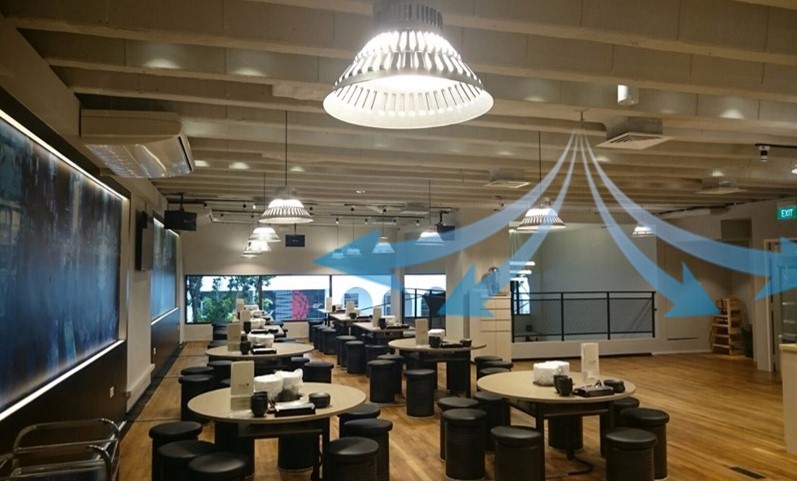

When
No matter how great the décor or how current the design of a restaurant is, if the indoor environmental quality (IEQ) isn’t up to snuff, customers will not sit still long enough to notice.
They likely won’t return, and they might even send you their dry cleaning tab. So, whether you run a closed, smoke-free restaurant or not, maintaining the indoor environmental quality (IEQ) in your business premises is of utmost importance.
The main causes of bad odour and staleness in an indoor restaurant are remnant food smell, mould, bacteria and pollutants like cigarette smoke. In fact, indoor furnishings like carpets, curtains and cushions as well as air-conditioners have become fertile breeding grounds for these contaminants which can cause headaches, eye irritation, allergies and fatigue. Below are some common indoor contaminants that can be found in restaurants:
Consist of bacteria, viruses, fungi (mould), dust mite allergen, animal dander, insect biodetritus, fibres and fiberglass, pollen, cockroach allergen, etc. This may result from inadequate maintenance and housekeeping, water spills, inadequate humidity control, condensation, or may be brought into the restaurant by occupants, infiltration, or ventilation air. Allergic responses to indoor biological pollutant exposures cause symptoms in allergic individuals and also play a key role in triggering asthma episodes.


Breathing in clean indoor air is vital not only for the customer’s health, comfort and well-being but also for the staff working at the restaurant. Restaurant operators can choose among many helpful ancillary tools available to help manage restaurant indoor environmental quality (IEQ).

At the front door, vestibules provide an intermediate airlock, so that prevailing winds don’t overpower the positive pressure in the dining room. Ceiling fans not only act as a design element, but also help eliminate dead-air spaces. The air movement helps area climate control. Window blinds are also great to shade solar heat while strategically planted shade trees help offset afternoon solar load peaks.
When it comes to cleaning indoor air, air filtering systems have been used for many years; however, this is not enough as indoor air pollutants are found both in air and on surfaces. An air filtering system can only treat airborne and not surface-bound pollutants, which means there are limitations in cleaning and treating mould and bacteria growth on indoor surfaces.

Although indoor environmental quality could be considered just part of the mechanical support systems, it should be an integral part of the architectural design process because of its importance to a restaurant’s success. Spend a little bit more on your restaurant’s infrastructure, and it will pay itself back in ways that you cannot directly measure. Most importantly, customers will enjoy their food more if they feel comfortable when dining at your restaurant.
©Ink On Paper Media Sdn Bhd
 views
views